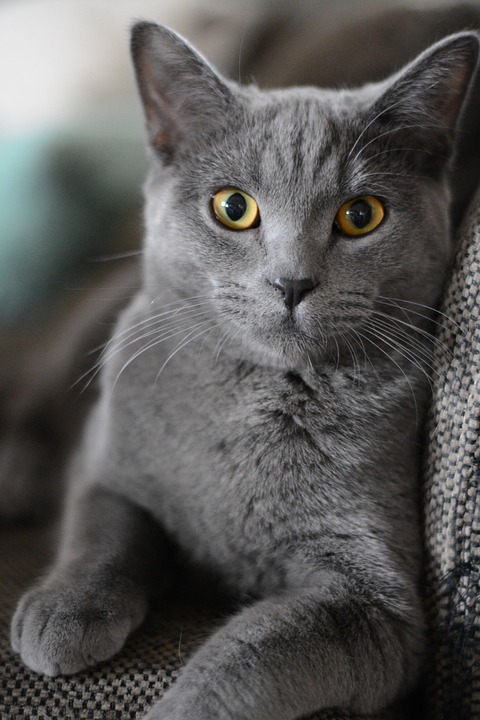The Power of Mental Stimulation: How to Keep Your Brain Sharp
Introduction:
Exploring the Link Between Mental Stimulation and a Sharp Brain
In recent years, there has been a growing understanding of the importance of mental stimulation for maintaining a sharp and healthy brain. This understanding applies not only to humans but also to our feline friends. Just like humans, cats can benefit greatly from mental stimulation, which can improve their cognitive abilities and overall well-being. In this article, we will delve into the significance of mental stimulation for cats and explore various engaging activities that can help keep their brains sharp.
Heading 1: Understanding the Importance of Mental Stimulation for Cats
Sub-heading 1.1: The Cognitive Abilities of Cats
Cats are intelligent creatures with remarkable cognitive abilities. They possess excellent memory, problem-solving skills, and the ability to learn new tasks. Mental stimulation plays a crucial role in maintaining and enhancing these abilities, allowing cats to stay mentally sharp and agile.
Sub-heading 1.2: The Impact of Mental Stimulation on Overall Well-being
Mental stimulation goes beyond just keeping cats intellectually engaged. It also has a positive impact on their overall well-being. When cats are mentally stimulated, it helps to alleviate boredom, reduce stress and anxiety, and prevent behavioral problems such as aggression or destructive behavior. Mental stimulation is essential for providing a fulfilling and enriched life for our feline companions.
Heading 2: Engaging Activities to Keep Your Cat’s Brain Sharp
Sub-heading 2.1: Interactive Toys and Puzzles
Interactive toys and puzzles are excellent tools for mental stimulation. These toys engage a cat’s natural hunting instincts and provide them with a challenge. Toys that require problem-solving, such as treat-dispensing puzzles, can keep your cat entertained and mentally stimulated for hours.
Sub-heading 2.2: The Benefits of Food Dispensing Toys
Food dispensing toys are another great way to keep your cat’s brain sharp. These toys require cats to work for their food, stimulating their problem-solving abilities and providing mental enrichment. They also help slow down a cat’s eating pace, promoting healthy digestion and preventing obesity.
Sub-heading 2.3: The Fascination of Catnip
Catnip is a natural herb that can provide mental stimulation and entertainment for cats. It stimulates their senses and can lead to playful behavior, keeping their brains engaged and active.
Sub-heading 2.4: The Joy of Hunt and Play
Engaging in interactive play sessions with your cat using toys that mimic prey can be highly beneficial for mental stimulation. This type of play allows them to exercise their natural hunting and chasing instincts while keeping their minds sharp.
Heading 3: Environmental Enrichment for Mental Stimulation
Sub-heading 3.1: Creating a Stimulating Indoor Environment
Indoor cats can benefit from a stimulating environment that includes scratching posts, hiding spots, and elevated perches. These elements provide mental stimulation by allowing cats to explore and engage in natural behaviors.
Sub-heading 3.2: Indoor Climbing and Scratching Opportunities
Cats love to climb and scratch, and providing them with appropriate climbing trees and scratching posts can keep their brains sharp. These activities engage their muscles and minds, promoting a healthy and stimulated feline.
Sub-heading 3.3: The Power of Vertical Space
Vertical space, such as tall cat trees or shelves mounted on the wall, can significantly contribute to mental stimulation. Cats have a natural inclination to climb and observe their surroundings from an elevated position. Access to vertical space allows them to exercise their natural behaviors and keep their minds sharp.
Heading 4: Mental Stimulation Through Training and Bonding
Sub-heading 4.1: The Art of Clicker Training
Clicker training is a positive reinforcement technique that can be used to teach cats new tricks and behaviors. This training method stimulates their brains, enhances their problem-solving abilities, and strengthens the bond between cats and their owners.
Sub-heading 4.2: Teaching Tricks and Commands
Teaching your cat tricks and commands not only provides mental stimulation but also helps to establish clear communication and reinforce obedience. Simple commands like “sit,” “stay,” or “fetch” can be taught using positive reinforcement techniques and reward-based training.
Sub-heading 4.3: The Benefits of Regular Playtime
Regular playtime is vital for a cat’s mental stimulation. Interactive play sessions with toys or laser pointers allow cats to engage their minds, release energy, and exercise their bodies. Playtime is also a great opportunity for bonding and strengthening the human-cat relationship.
FAQs:
Q1: How often should I engage my cat in mental stimulation activities?
A1: It is recommended to engage your cat in mental stimulation activities daily, preferably in short sessions throughout the day.
Q2: Are there any specific toys or puzzles recommended for mental stimulation?
A2: There are various interactive toys and puzzles available in the market, such as treat-dispensing toys or puzzle feeders. Look for toys that challenge your cat’s problem-solving skills and cater to their natural instincts.
Q3: Can mental stimulation help with behavioral issues in cats?
A3: Yes, mental stimulation can significantly help in preventing and managing behavioral problems in cats by providing an outlet for their energy, reducing boredom, and promoting a sense of fulfillment.
Q4: How can I create a stimulating outdoor environment for my cat?
A4: If your cat has access to an outdoor area, ensure there are climbing structures, hiding spots, and areas to explore. Providing toys and puzzles specifically designed for outdoor use can also enhance mental stimulation.
Q5: Are there any risks associated with excessive mental stimulation?
A5: While mental stimulation is crucial for cats, excessive stimulation without breaks can lead to overstimulation and stress. It is essential to observe your cat’s behavior and provide them with downtime when needed.
Disclaimer: The information provided in this article is based on expert knowledge and research. However, every cat is unique, and it is essential to consult with a veterinarian before implementing any new activities or changes in your cat’s routine.








